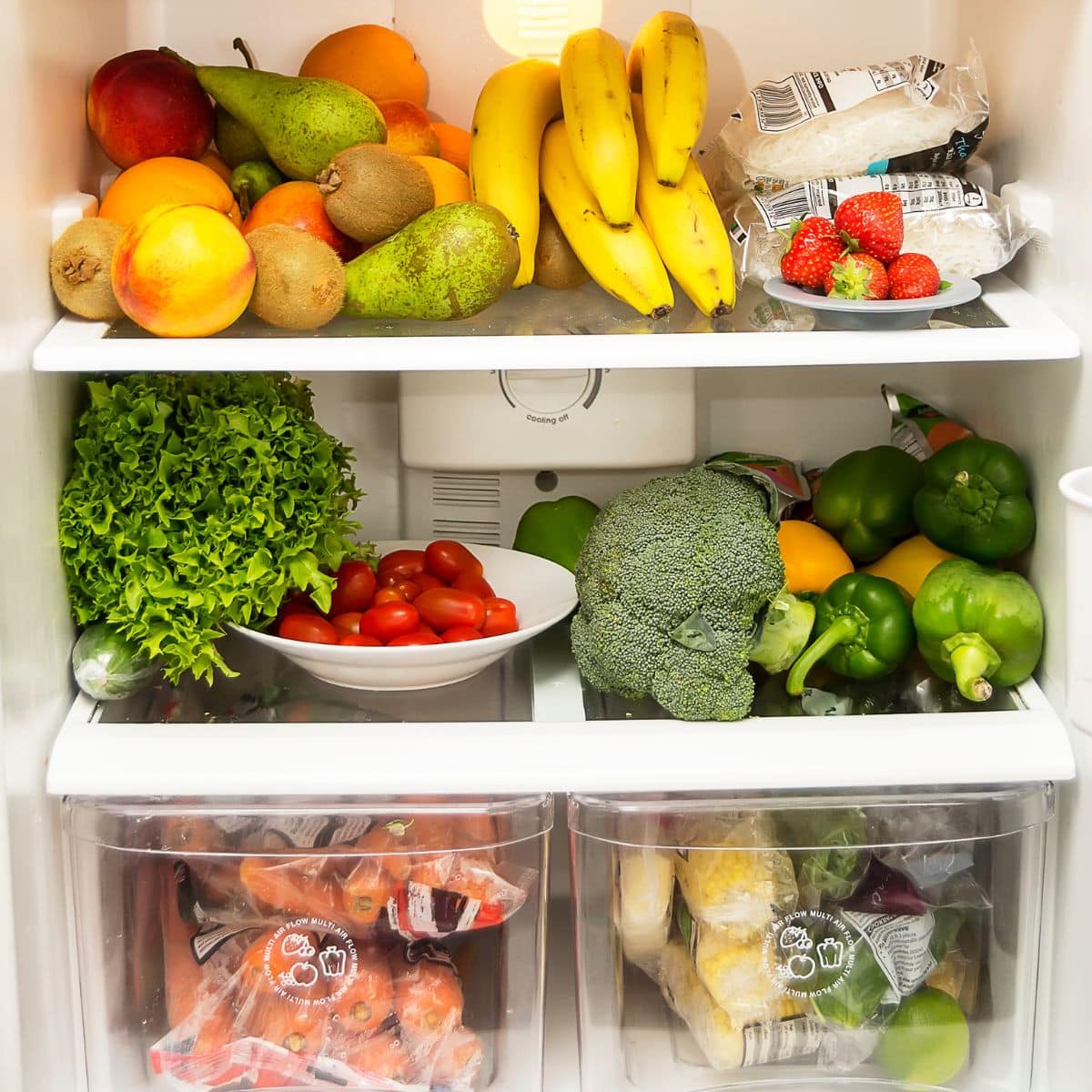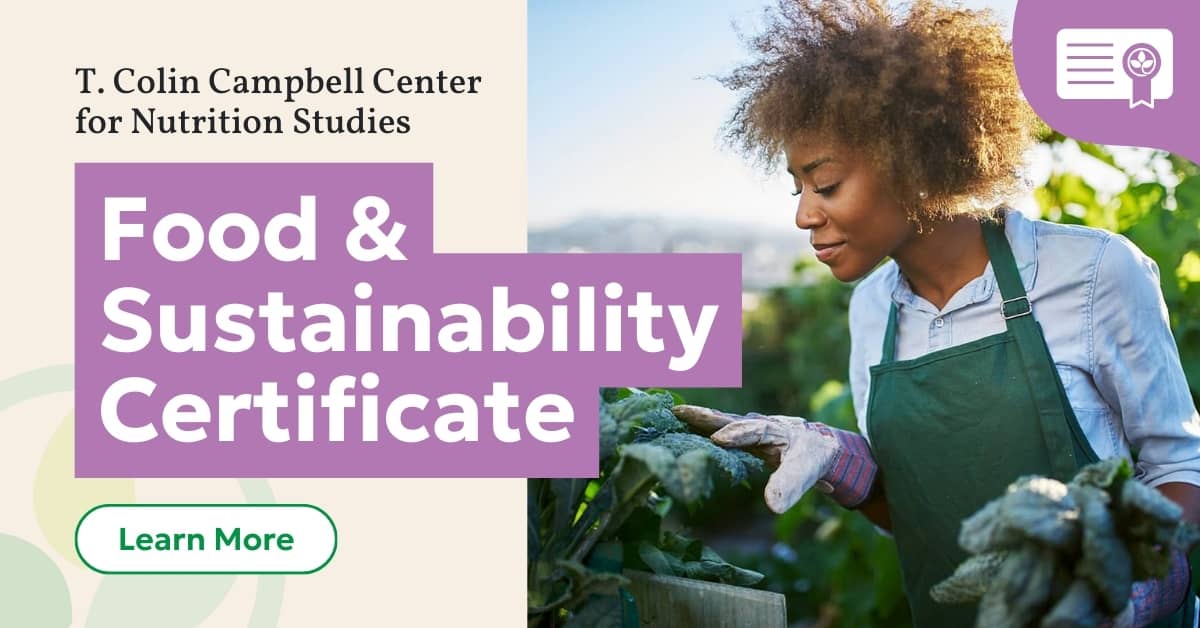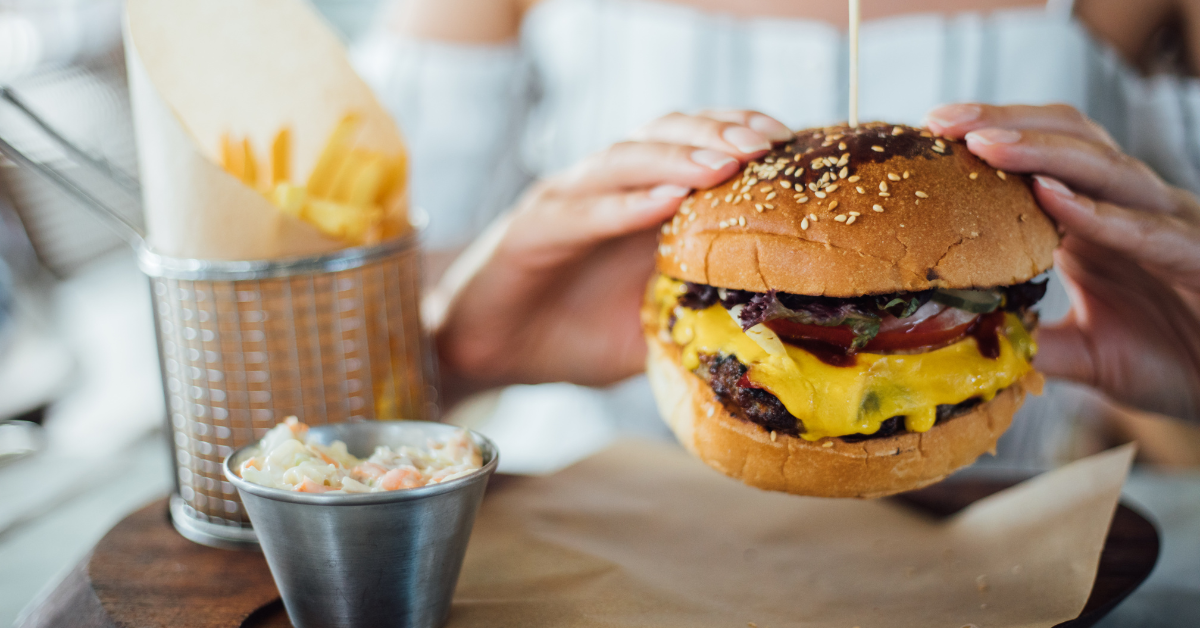

If your mom was like mine, you’ve been a card-carrying member of the Clean Plate Club since you were a kid. Granted, cleaning that plate isn’t the healthiest thing for people eating a standard American diet, but what about people following a whole food, plant-based (WFPB) lifestyle? Was Mom right to introduce you to the club?
Estimates from the United States Department of Agriculture (USDA) indicate that thirty to forty percent of food is wasted in this country. One recent study showed that the average American trashes about a pound of food every day.[1] The shocker from that study was that folks who eat higher-quality diets often waste more food due to wasted fruits and vegetables. (The inherent wastefulness of producing unhealthy food products complicates this analysis, but that is, perhaps, a separate issue.)
While food waste places an obvious dent in the wallet—a family of four pitches at least $1,500 in food waste annually—there is a bigger issue: climate change. In the US, food is the biggest contributor to landfills, and as it decomposes, it produces methane, a greenhouse gas 86 times more potent than carbon dioxide, according to the Natural Resources Defense Council (NRDC). The costs associated with food waste are also concerning, including resource, land, and energy costs.
The United States has set a goal to halve food loss and waste by 2030, but you don’t have to wait for the government before taking action yourself. You can become a food waste warrior today by taking charge of your family’s waste. I’m proud to admit that, although it’s just my husband and me (and our cat and dog), food rarely gets wasted in my house. That’s not to say we don’t waste some, especially the parts of produce usually deemed inedible, but our trash output is low. Here are seven strategies I’ve found useful for cutting food waste.

1. Inventory Your Fridge
Wasting less food starts by tracking what’s in your kitchen. Although I do this manually every few days, you can also use apps like OLIO and Chefling to track what is in your fridge. You can set these apps up to alert you when foods are close to spoiling, and some apps even suggest recipes based on what’s in your fridge. Having a clear organizational strategy also helps. For instance, you can designate a bin or box in your refrigerator for foods that are closer to expiring so that they don’t get buried behind other foods.
2. Don’t Regard Dates as the Law
Although I look at “sell by” and “use by” dates and would not encourage you to ignore them, these dates are not guarantees of when a food will go bad. Usually, these dates estimate when the quality of a product might begin to slip; they do not prove an item is unsafe. Your nose is a better tool to determine whether an item has gone bad: if it smells rancid (or looks moldy), you should beware. Most foods remain perfectly safe for some time after their use by dates, but unfortunately, many Americans remain confused about these dates’ meaning. According to one survey, these dates cause up to 90 percent of Americans to waste food.[2]
3. Plan Meals in Advance
This isn’t only a food waste saver but a time saver, too. With a menu, you know exactly what you have to purchase and cook each week. You’ll probably shop with a list, which will reduce your risk of impulse shopping and thus lessen the chance that you’ll buy food you won’t use. I usually plan meals for the upcoming week on Saturday mornings so I can hit the grocery store and outdoor farmers’ market that day.
4. Befriend Your Freezer
Many foods about to turn bad can be frozen and used later in soups, smoothies, breads, and sauces. For instance, when my bananas are becoming overripe, I peel and cut them, freeze them, and use them later for smoothies and banana bread. You can use this strategy for all kinds of produce, including berries, celery, onions, and bell peppers. This is especially useful if your cooking plans change and you are left with perfectly good food that will not be used soon.
5. Learn to Love Leftovers
I cook three meals a week but get five dinners from them, because two of the meals serve double duty. Do you hate leftovers? Try reflavoring the food or adding something else to make it seem new. My leftover law applies to restaurants, too. Think of all the prep time you will save!
6. Embrace Ugly Produce
To help cut waste, stores often place damaged or almost-expired produce in special bins (if your store isn’t doing this, you can speak with the manager) and sell them at a heavily discounted price. I’ve picked up bananas, apples, oranges, and grapefruit for dirt cheap. By buying these foods, which are often organic, you send the store a message that you support ugly produce, yet another way to alleviate food waste. I’ve also found discounted produce on the regular shelves when the food is approaching its alleged expiration date, so keep your eyes peeled.
7. Get Creative
Creativity is key to defeating food waste. For example, can you find new purposes for leftovers or traditionally inedible parts of food? If you have excess mashed potatoes, you can turn them into potato cakes. Is your bread going stale? Make croutons. If you’re not into composting, look for novel uses for your scraps. Did you know you can pickle watermelon rinds or use banana peels to make “bacon”?
Even after applying all of these strategies, you won’t be able to eradicate all food waste, but the chances are high that you will do a much better job. With a conscious eye on your fridge and eating habits, you can lower your waste to as close to zero as possible.
References
- Conrad Z, Niles MT, Neher DA, Roy ED, Tichenor NE, Jahns L. Relationship between food waste, diet quality, and environmental sustainability. PLoS One. 2018;13(4):e0195405. Published 2018 Apr 18. doi:10.1371/journal.pone.0195405
- NRDC. New report: Food expiration date confusion causing up to 90% of Americans to waste food. September 18, 2013. https://www.nrdc.org/press-releases/new-report-food-expiration-date-confusion-causing-90-americans-waste-food
Copyright 2025 Center for Nutrition Studies. All rights reserved.
Deepen Your Knowledge With Our
Plant-Based Nutrition
Certificate
Plant-Based Nutrition Certificate
- 23,000+ students
- 100% online, learn at your own pace
- No prerequisites
- Continuing education credits





